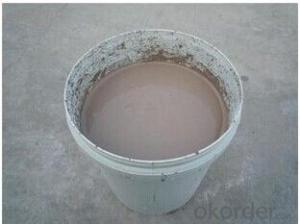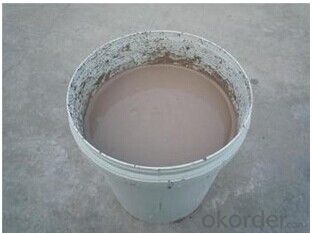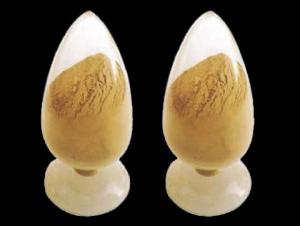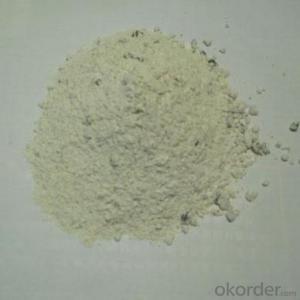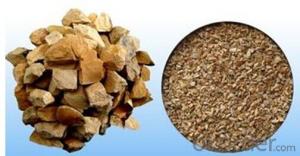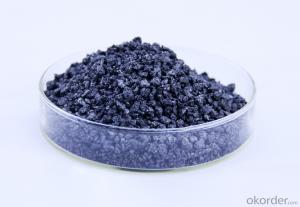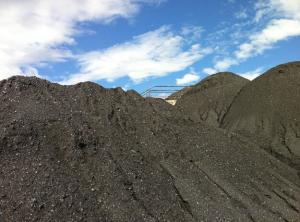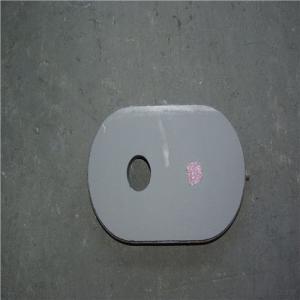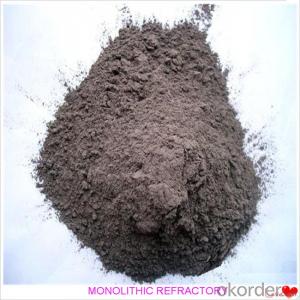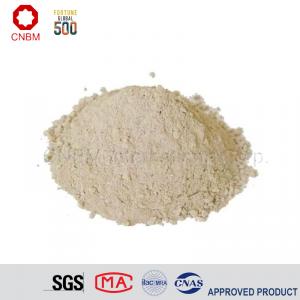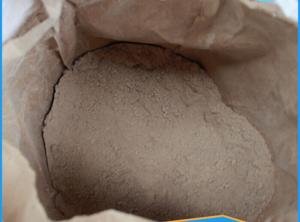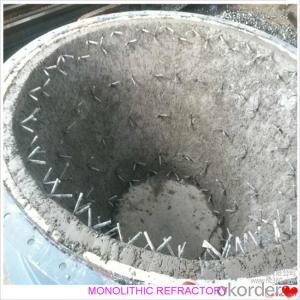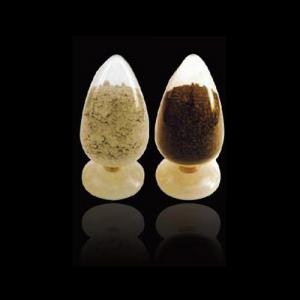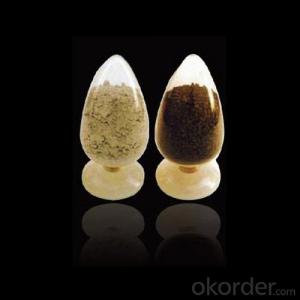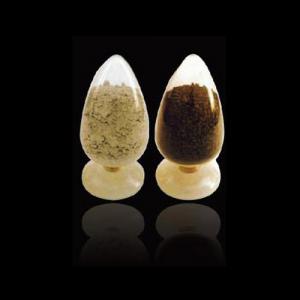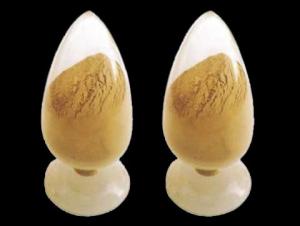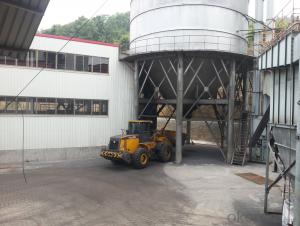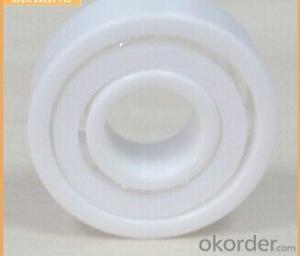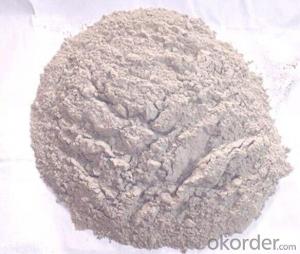Monolithic Refractories High-Temperature Bonder Cement for Iron and Steel Industry
- Loading Port:
- China Main Port
- Payment Terms:
- TT OR LC
- Min Order Qty:
- -
- Supply Capability:
- -
OKorder Service Pledge
OKorder Financial Service
You Might Also Like
TY-AZS33
Shapes and sizes: there are great variety of formats and shapes which are available for different forming and special machine processes.
Application: mainly used for working ends, feeder channel, side walls, superstructures, crowns, sidewalls, tank bottoms, C-shaped brick and doghouse crown.etc.
TY- AZS36
Shapes and sizes: This product is only available for straight brick.
Application:mainly used for side walls of flame furnaces with embedded melter bottoms, for total security with average pulls and campaign lengths, and superstructures, front wall, back wall, top crown in glass melting furnace.
TY- AZS41
Shapes and sizes: this product is available in a large size straight or approximate bricks and special formats and shapes which are available for special machining processes.
Application: Mainly used for sidewalls, doghouses, throat, bottom budding, Dam blocks, electric block corners.
Item | Behaviors | |||
TY-AZS33 | TY-AZS36 | TY-AZS41 | ||
Chemical Composition | Al2O3 | ≥50.00 | ≥49.00 | ≥45.00 |
ZrO2 | ≥32.50 | ≥35.50 | ≥40.50 | |
SiO2 | ≤15.50 | ≤13.50 | ≤13.00 | |
Na2O+K2O | ≤1.30 | ≤1.35 | ≤1.30 | |
Bulk density g/cm3 | ≥3.75 | ≥3.85 | ≥4.00 | |
Apparent Porosity % | ≤1.2 | ≤1.0 | ≤1.2 | |
Cold Crushing Strength Mpa | ≥300 | ≥300 | ≥300 | |
Exudation Temperature of Glass Phase | ≥1400 | ≥1400 | ≥1410 | |
Bubble Separation Ratio(1300°C×10h) | ≤1.5 | ≤1.4 | ≤1.0 | |
Anti-corrosion rate of glass liquid 1500°C×36h (mm/24h)% | ≤1.45 | ≤1.3 | ≤1.2 | |
Apparent density (g/cm3) | PT(RN RC N) | ≥3.45 | ≥3.50 | ≥3.70 |
ZWS(RR EVF EC ENC) | ≥3.60 | ≥3.70 | ≥3.90 | |
WS( RT VF EPIC FVP DCL) | ≥3.70 | ≥3.80 | ≥4.00 | |
- Q: What are the main factors affecting the thermal expansion of monolithic refractories?
- The main factors affecting the thermal expansion of monolithic refractories include the chemical composition of the refractory material, the temperature at which it is exposed, and the rate at which it is heated or cooled. Other factors such as the presence of impurities, the porosity of the material, and the type of bonding agents used can also influence the thermal expansion behavior of monolithic refractories.
- Q: How do monolithic refractories contribute to the overall efficiency of ladle refining processes?
- Monolithic refractories play a crucial role in enhancing the overall efficiency of ladle refining processes. These refractories, which are made from a single composition, offer superior thermal resistance and excellent erosion resistance. By lining the ladle with monolithic refractories, they help to maintain consistent temperatures, preventing heat loss and ensuring efficient heat transfer during the refining process. Additionally, their high erosion resistance minimizes the wear and tear caused by the aggressive nature of molten metal, leading to extended ladle lifespan and reduced downtime for repairs. Thus, monolithic refractories significantly contribute to the overall efficiency of ladle refining processes by optimizing heat management and maintaining ladle integrity.
- Q: How do monolithic refractories improve the efficiency of reheating furnaces in steel plants?
- The efficiency of reheating furnaces in steel plants is greatly improved by the use of monolithic refractories. Specifically designed to withstand high temperatures and harsh conditions, these refractories are an ideal choice for steel plants. One important way in which monolithic refractories enhance furnace efficiency is by decreasing heat loss. With their excellent insulation properties, these refractories minimize the transfer of heat from the furnace to its surroundings. As a result, less energy is wasted and the furnace can maintain its desired temperature more effectively. Furthermore, monolithic refractories contribute to a more uniform and controlled distribution of heat within the furnace. They can be easily shaped and installed to create a seamless lining, ensuring that heat is evenly spread throughout the furnace chamber. This even distribution of heat eliminates any hotspots or cold spots, resulting in a more efficient heating process. Another crucial role of monolithic refractories is reducing downtime and maintenance requirements. Unlike traditional brick linings, which are prone to cracking and erosion, monolithic refractories offer superior resistance to wear and tear. This increased durability reduces the need for frequent repairs and replacements, allowing for uninterrupted furnace operation and increased overall efficiency. Moreover, monolithic refractories help improve energy efficiency by decreasing fuel consumption. The superior insulation properties of these refractories help retain heat within the furnace, reducing the amount of energy needed to maintain the desired temperature. This leads to significant energy savings for steel plants, as less fuel is required to achieve the same heating results. In conclusion, the efficiency of reheating furnaces in steel plants is significantly enhanced by the use of monolithic refractories. These refractories reduce heat loss, ensure uniform heat distribution, minimize downtime and maintenance, and decrease fuel consumption. By incorporating these refractories into their furnace linings, steel plants can increase productivity, reduce energy costs, and improve overall operational efficiency.
- Q: How do monolithic refractories prevent heat loss through convection?
- Monolithic refractories effectively prevent heat loss through convection due to their unique composition and structure. Unlike traditional refractory bricks, which often have gaps and are porous, monolithic refractories are made of a single, seamless structure. This eliminates any possible pathways for hot gases or air to circulate and carry away heat by convection. Furthermore, monolithic refractories have a high thermal conductivity and are often dense, making them excellent conductors of heat. This allows them to rapidly absorb and distribute heat, minimizing the temperature difference between the hot surface and the surrounding environment. By reducing the temperature gradient, monolithic refractories decrease the driving force for convection, resulting in reduced heat loss through this mechanism. Moreover, monolithic refractories can be applied as a continuous lining, conforming to the shape of the equipment or furnace being protected. This seamless application eliminates joints or gaps where hot gases or air could escape and carry away heat. The uniform and uninterrupted lining further decreases the potential for convection heat loss. In summary, monolithic refractories are specifically designed to create a barrier that hinders the movement of hot gases or air, effectively minimizing heat loss through convection. Their dense composition, high thermal conductivity, and seamless application all contribute to their effectiveness in preventing heat loss through this mechanism.
- Q: What are the challenges in recycling monolithic refractories?
- There are several challenges in recycling monolithic refractories that make the process more complex compared to other materials. Firstly, monolithic refractories are designed to withstand high temperatures and harsh conditions, making them highly resistant to wear and tear. This durability also poses a challenge in the recycling process, as it requires specialized techniques and equipment to break down and separate the refractory material. Secondly, monolithic refractories often contain various additives and binders, such as clay, cement, and other organic compounds, which can complicate the recycling process. These additives may need to be removed or separated from the refractory material before it can be recycled effectively. Additionally, monolithic refractories can be contaminated with other materials, such as metal oxides, slag, and impurities, during their service life. These contaminants can affect the quality and properties of the recycled refractory material, requiring thorough cleaning and purification processes. Moreover, the logistics involved in collecting and transporting monolithic refractories for recycling can be challenging. Refractories are often used in large quantities in industrial settings, and their removal and transportation can be costly and time-consuming. Furthermore, finding suitable recycling facilities with the necessary equipment and expertise to handle monolithic refractories can be limited, especially in certain regions. Lastly, economic factors play a role in the challenges of recycling monolithic refractories. The cost of recycling and processing the refractories may not always be financially viable compared to using virgin materials. This can discourage companies from investing in recycling programs and contribute to the lower demand for recycled refractory materials. Overall, the challenges in recycling monolithic refractories mainly stem from their durability, complex composition, contamination, logistics, and economic considerations. However, advancements in technology and increased awareness of the environmental benefits of recycling may help overcome these challenges and promote the sustainable reuse of refractory materials.
- Q: How do monolithic refractories contribute to the overall safety of iron and steel operations?
- Monolithic refractories play a crucial role in ensuring the overall safety of iron and steel operations. These refractories are designed to withstand extreme temperatures, chemical reactions, and mechanical stresses, providing a protective barrier to the furnaces, ladles, and other equipment used in these operations. By maintaining the integrity of the refractory lining, monolithic refractories prevent leaks, minimize the risk of thermal shock, and reduce the chances of equipment failure or accidents. This helps to safeguard the workers, prevent damage to the infrastructure, and ensure the uninterrupted production of iron and steel, thus contributing to the overall safety of the operations.
- Q: What are the key properties of monolithic refractories?
- Monolithic refractories, which lack a definite form like bricks or tiles, are a type of refractory material. They are typically composed of a mixture of aggregates, binders, and additives that can be easily molded and installed in various industrial applications. The main characteristics of monolithic refractories include: 1. Exceptional heat resistance: Designed to endure extremely high temperatures, monolithic refractories are suitable for industries such as steel, cement, glass, and petrochemicals. They can maintain their strength and structural integrity even at temperatures exceeding 3000 degrees Fahrenheit. 2. Ability to withstand thermal shock: Monolithic refractories possess the capacity to resist sudden temperature changes, which can cause cracking or damage to the refractory. This property is crucial in environments where rapid heating or cooling occurs, such as furnaces or kilns. 3. Resistance to chemical attack: Monolithic refractories display excellent resistance to corrosion from molten metals, slag, gases, and other harsh substances. This makes them ideal for environments where contact with acidic or alkaline materials is common. 4. Low porosity: Monolithic refractories have low porosity, meaning they have a high density and are less permeable to gases and liquids. This property ensures that molten metals or corrosive substances cannot easily penetrate the refractory, contributing to its longevity and performance. 5. Easy installation and repair: Unlike traditional refractory materials like bricks, monolithic refractories can be easily molded and installed in various shapes and sizes. They can be applied using techniques such as spraying, casting, or ramming, allowing for faster installation and reduced downtime. Additionally, if any damage occurs, they can be easily repaired or patched. 6. Strong mechanical strength: Monolithic refractories possess sufficient mechanical strength to endure the stresses and pressures encountered during their service life. This guarantees their structural integrity, even under high load conditions. Overall, the versatile and reliable properties of monolithic refractories make them an excellent choice for a wide range of industrial applications that require resistance to high temperatures, chemicals, and thermal shock.
- Q: What are monolithic refractories and how are they used in the iron and steel industry?
- Monolithic refractories are a type of refractory material that is composed of a single, homogeneous structure. They are used in the iron and steel industry for various applications such as lining furnaces, ladles, and other high-temperature equipment. These refractories are typically made from a combination of aggregates, binders, and additives, which are mixed with water to form a plastic consistency. Once applied, they are dried and fired to create a strong and durable lining that can withstand extreme temperatures and chemical reactions. Monolithic refractories offer advantages like easy installation, excellent thermal shock resistance, and superior performance, making them crucial components in the iron and steel manufacturing process.
- Q: How can the lifespan of monolithic refractories be extended in the iron and steel industry?
- The lifespan of monolithic refractories in the iron and steel industry can be extended through various measures. Firstly, proper installation and maintenance of the refractories is crucial. This includes ensuring that the refractories are correctly shaped and sized to fit the specific application, as well as using appropriate installation techniques and materials. Regular inspections should be conducted to identify any signs of wear or damage, and immediate repairs or replacements should be carried out to prevent further deterioration. Secondly, implementing effective heat management practices can significantly prolong the lifespan of monolithic refractories. This involves monitoring and controlling the temperature gradients within the refractory lining to prevent thermal shock and excessive thermal cycling. Adequate insulation and cooling systems should also be in place to maintain a stable and controlled environment. Furthermore, proper handling and operation of the equipment and processes can contribute to extending the refractory lifespan. Avoiding sudden temperature changes, minimizing mechanical stress and impact, and employing appropriate operating procedures can help reduce the wear and tear on the refractories. Additionally, utilizing advanced refractory materials and technologies can enhance the lifespan of monolithic refractories. The development and use of high-performance and specialized refractories, such as advanced ceramics or specialized coatings, can provide increased resistance to thermal and chemical degradation, ultimately extending their lifespan. Lastly, continuous research and development efforts should be undertaken to explore innovative solutions for refractory longevity in the iron and steel industry. Collaborating with suppliers, experts, and industry partners can help identify and implement new technologies and techniques that can improve the durability and performance of monolithic refractories. In summary, extending the lifespan of monolithic refractories in the iron and steel industry requires a combination of proper installation and maintenance, effective heat management, careful handling and operation, utilization of advanced materials, and ongoing research and development. By implementing these strategies, the iron and steel industry can optimize refractory performance and reduce downtime and costs associated with frequent replacements.
- Q: How do monolithic refractories contribute to reducing downtime in iron and steel plants?
- Monolithic refractories contribute to reducing downtime in iron and steel plants by providing enhanced durability and resistance to high temperatures, chemical corrosion, and mechanical wear. These refractories can be quickly and easily installed, repaired, or replaced, minimizing the time required for maintenance and reducing production interruptions. Their versatile and customizable nature allows for efficient lining of various equipment, such as furnaces, ladles, and converters, ensuring a continuous and uninterrupted production process.
Send your message to us
Monolithic Refractories High-Temperature Bonder Cement for Iron and Steel Industry
- Loading Port:
- China Main Port
- Payment Terms:
- TT OR LC
- Min Order Qty:
- -
- Supply Capability:
- -
OKorder Service Pledge
OKorder Financial Service
Similar products
Hot products
Hot Searches
Related keywords
